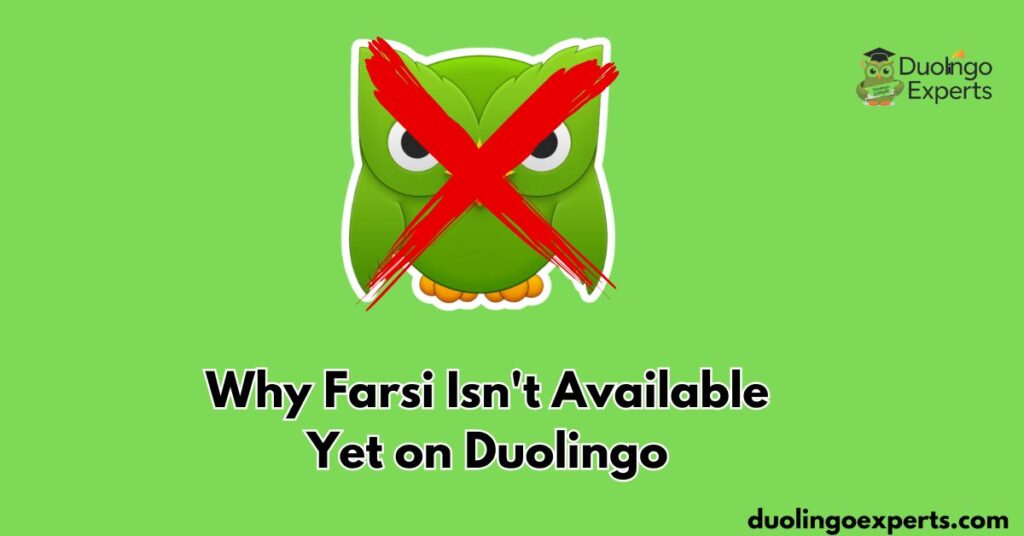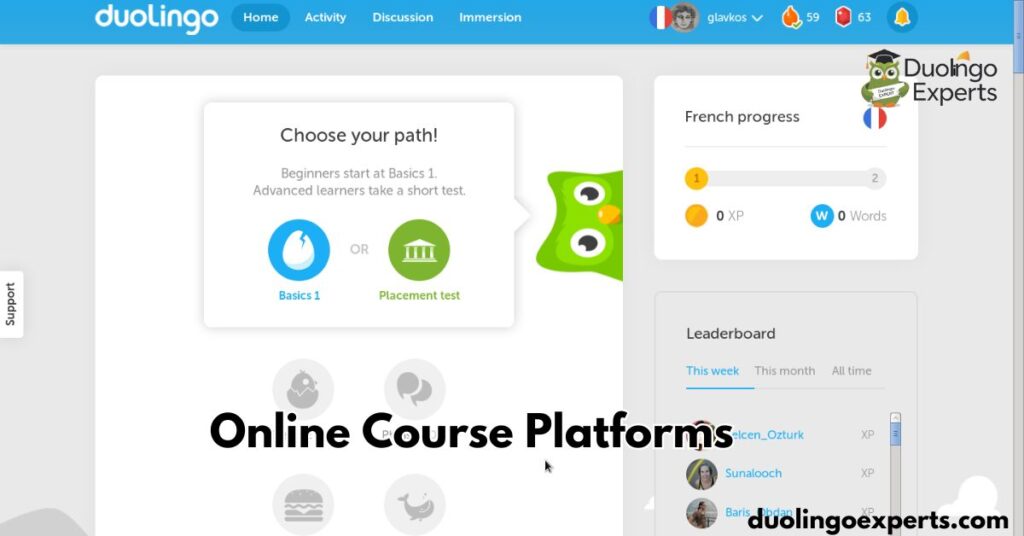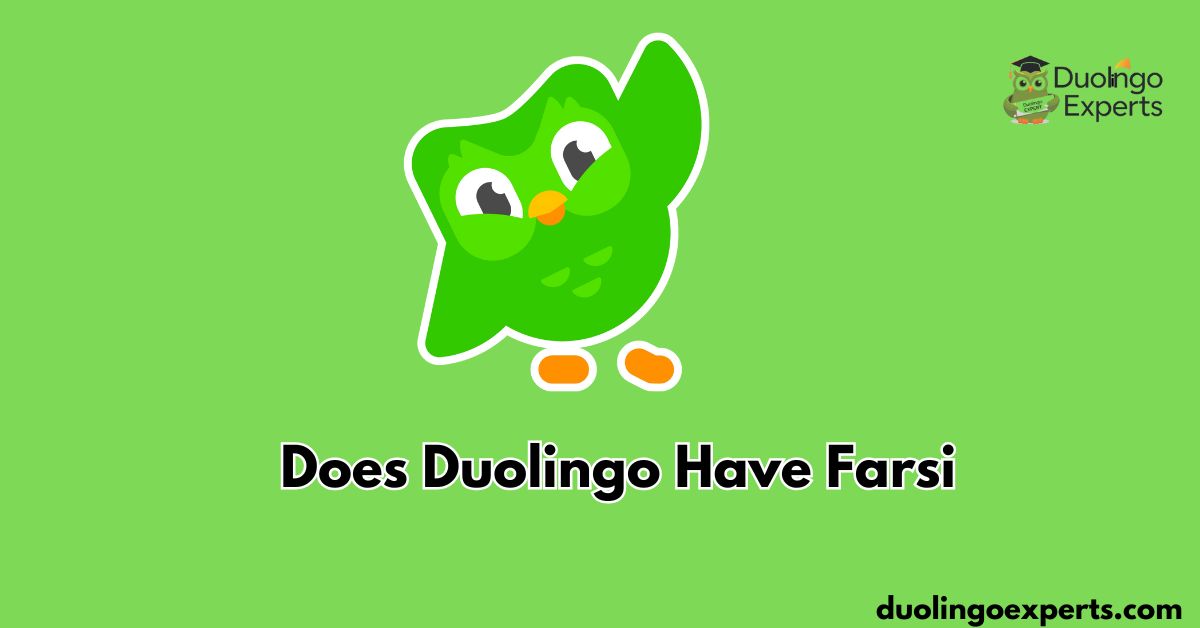Learning a new language opens doors to endless possibilities whether it’s for travel, business, or cultural exploration. Among the many languages people want to learn, Farsi (or Persian) stands out due to its rich history, cultural significance, and its prevalence as the official language in Iran, Afghanistan, and Tajikistan. But despite its importance, many language learners are left wondering: Does Duolingo have Farsi? In this post, we’ll explore the availability of Farsi on Duolingo, why it’s not available yet, and some of the best alternatives for learning Persian online.
Does Duolingo Have Farsi?
The Current Status of Farsi on Duolingo
Duolingo has emerged as a frontrunner in language learning apps, boasting a massive user base worldwide and offering courses in over 30 languages. From Spanish to Zulu, Duolingo covers a wide range of languages, with an emphasis on accessibility and user-friendliness. However, when it comes to Farsi (or Persian), there’s a noticeable gap.
Despite the language’s significant cultural and historical importance, Farsi is not part of Duolingo’s current offering. This omission comes as a disappointment to many who wish to dive into learning Persian, a language spoken by millions across Iran, Afghanistan, Tajikistan, and by significant diaspora communities around the globe.
At present, Duolingo offers a variety of courses in languages ranging from commonly spoken ones like French, German, and Italian to more niche options like Esperanto and Swahili. However, Farsi is noticeably absent, leaving many learners looking elsewhere for resources.
Why Farsi Isn’t Available Yet on Duolingo

Several reasons can explain why Duolingo does not offer a Farsi course. While there is certainly demand for the language, there are a few key factors at play that have impacted the decision.
1. Demand and Popularity
One of the most significant factors behind the absence of Farsi on Duolingo is the demand for the language. While Farsi is spoken by millions, its global reach is relatively concentrated in specific regions, such as Iran, Afghanistan, and Tajikistan. Languages like Spanish and French enjoy widespread global usage, both in terms of native speakers and language learners. Duolingo, which prioritizes languages based on the number of potential learners, tends to focus on languages that have broader international demand.
Although Farsi is of great cultural importance, its demand is not as universal as other languages. Therefore, Duolingo may have deemed it a lower priority compared to languages spoken in multiple countries and regions across the world.
2. The End of Volunteer Contribution Programs
Previously, Duolingo allowed users to contribute to the creation of language courses through its volunteer contribution program. This program allowed passionate language learners to help build courses for lesser-known languages or those not yet offered by Duolingo. Farsi could have been one of the languages to benefit from this initiative. However, Duolingo shut down this program, making it impossible for volunteers to create courses anymore.
Without this volunteer initiative, Duolingo must rely on its internal development team to create new courses. This added layer of complexity may have slowed the development of a Persian language course. Moreover, it’s important to note that Duolingo typically works on creating courses for languages with higher global demand, which further pushes Farsi down the priority list.
3. Technical Challenges in Teaching Persian
The Farsi language has its own set of challenges, especially when it comes to teaching it in a digital format. Unlike languages that use the Latin alphabet (such as English, Spanish, and French), Farsi is written in the Perso-Arabic script, which is read from right to left. This writing system poses a technical challenge for platforms like Duolingo, which primarily caters to languages with left-to-right scripts.
Additionally, Farsi pronunciation includes sounds not found in many other languages, such as the “gh” and “kh” sounds. These nuances make it harder to create clear and intuitive lessons for beginners, especially if the course is designed for people with no prior experience with the language.
Finally, Farsi grammar differs significantly from languages like Spanish and French, and the lack of grammatical gender and cases adds another layer of complexity in course design. All these challenges mean that building a Duolingo Farsi course requires more effort, and the language’s unique features may make it harder to create engaging content for learners.
So, Does Duolingo Have Farsi? The Short Answer: No
At this moment, Duolingo does not offer a Farsi course. While the platform has expanded its language offerings over the years, Persian remains absent. However, this does not mean that learning Farsi is impossible. There are plenty of alternative platforms and tools available for those interested in studying this beautiful and historic language.
Alternative Platforms for Learning Farsi

While Duolingo may not have a Farsi course, there are many other resources where you can learn Persian effectively. Below, we discuss the best alternative platforms to consider for learning Farsi.
Mobile Apps for Learning Farsi
If you’re looking to learn Persian on the go, mobile apps are a great option. Many language learning apps focus on providing quick, interactive lessons that you can practice in your free time. Here are a few standout apps for learning Farsi:
Memrise
Memrise is one of the top apps for learning Persian vocabulary. It uses a spaced repetition system to help you retain new words and phrases. The app also offers native speaker audio, helping you get the pronunciation right. Memrise’s Farsi course is structured for beginners and gradually increases in difficulty, allowing you to improve your vocabulary, grammar, and comprehension over time.
Memrise is perfect for those who want a fun, gamified approach to learning Farsi and are looking for an app that will keep them engaged with regular reminders and interactive quizzes.
Pimsleur Persian
If you prefer audio-based learning, Pimsleur is a great option. Known for its emphasis on listening and speaking skills, the Pimsleur Persian course helps learners master pronunciation and basic conversational skills. The course is designed around audio lessons that you can listen to during your daily commute, making it perfect for busy individuals.
Pimsleur’s lessons are well-structured and easy to follow. It also utilizes the spaced repetition method, so you’ll continually revisit previously learned material to improve retention.
Ling
Ling is an interactive language learning app that offers lessons in Farsi for all skill levels. It covers essential Persian vocabulary, grammar, and pronunciation, with a focus on providing interactive quizzes and conversation practice. One feature that sets Ling apart is its use of voice recognition to help improve Farsi pronunciation.
Ling’s format is highly user-friendly, making it a great option for beginners looking to get started with Farsi in a structured, step-by-step manner.
Rosetta Stone
If you prefer an immersive language learning experience, Rosetta Stone offers an excellent option for learning Persian. Known for its visual association approach, Rosetta Stone helps you learn Farsi vocabulary and grammar through pictures and context. This method helps learners remember words and phrases without the need for direct translations.
Rosetta Stone’s immersive approach is ideal for those who want to dive straight into Farsi culture while learning the language.
Online Course Platforms

For more structured learning, online course platforms provide comprehensive courses with clear lesson plans. Here are some popular online platforms for learning Farsi:
iTalki
One of the best ways to learn Farsi online is through iTalki, a platform that connects learners with native speakers for one-on-one lessons. With iTalki, you can choose a tutor based on their experience, hourly rates, and teaching style. This is particularly helpful for learners who prefer a personalized experience and want to focus on conversation practice.
iTalki also offers flexible scheduling, allowing you to learn at your own pace. Whether you need help with Persian pronunciation, grammar, or conversation, iTalki can connect you with a tutor who meets your needs.
Preply
Similar to iTalki, Preply offers personalized lessons with native Persian speakers. Preply’s main selling point is its ability to cater to a variety of learning styles, from beginner to advanced levels. Whether you’re focusing on Farsi grammar, improving writing skills, or practicing spoken Persian, Preply’s tutors provide tailored lessons. Preply also offers a free trial lesson, so you can find a tutor that suits your learning style before committing.
PersianPod101
PersianPod101 offers a range of resources, including audio lessons, video lessons, and PDF worksheets. This platform is excellent for those who want to dive deeper into Farsi grammar, vocabulary, and culture. The PersianPod101 lessons are taught by native speakers, ensuring that you get an authentic learning experience.
One of the strengths of PersianPod101 is its focus on cultural context, which allows learners to gain insight into the Persian culture while studying the language. This is particularly helpful for students who want to use Farsi in real-life situations.
Language Exchange Communities
For learners who want to practice Farsi conversation, language exchange platforms provide a unique opportunity to chat with native speakers. Here are a few options for connecting with Farsi speakers:
Conversation Exchange
Conversation Exchange connects learners with native speakers for language practice via text, voice, and even video chats. It’s a great platform for improving conversational skills and gaining fluency in Farsi. You can connect with Persian speakers and practice speaking Farsi in a casual, informal setting.
WeSpeke
Another popular platform for language exchange is WeSpeke, which allows you to practice Farsi in real time with native speakers. You can engage in video chats, text based conversations, or even voice exchanges. These interactions provide an opportunity to improve Farsi fluency by practicing with real people, in authentic scenarios.
Best Tools and Resources for Learning Farsi
When learning Farsi, it’s essential to use a variety of tools that suit your individual learning style. Here are the best resources for mastering Persian:
| Tool | Best For |
|---|---|
| Memrise | Learning vocabulary and phrases quickly with spaced repetition. |
| Pimsleur Persian | Audio-driven learning for pronunciation and speaking skills. |
| Rosetta Stone | Immersive learning through visual associations, suitable for beginners. |
| Ling | Interactive learning with quizzes and voice recognition to improve Farsi pronunciation. |
| iTalki | One-on-one lessons with native speakers, perfect for personalized learning. |
| Preply | Tailored lessons with tutors, ideal for learners at all levels. |
| PersianPod101 | Structured audio and video lessons with a focus on cultural context and grammar. |
Frequently Asked Questions
Is Duolingo going to have Farsi?
Currently, Duolingo does not offer a Farsi course, and there are no official announcements regarding its availability in the future. While there is demand for a Farsi course, Duolingo has not prioritized it due to limited global demand and technical challenges.
Which language app has Farsi?
Memrise and Pimsleur both offer Farsi courses, providing users with structured lessons to learn the language. Additionally, PersianPod101 also offers extensive Farsi resources, including audio and video lessons.
Is Farsi easy to learn?
Farsi is considered relatively easy for English speakers to learn due to its straightforward grammar and lack of grammatical gender. However, mastering the Persian script and pronunciation can be challenging for beginners.
Is Farsi harder than Arabic?
Farsi is generally easier to learn than Arabic for English speakers, as it has simpler grammar and no grammatical gender. However, both languages share the same script, but Farsi’s pronunciation and structure are less complex than Arabic’s, which has more dialectal variation and a different verb system.
Does Duolingo have Pashto?
No, Duolingo does not currently offer a Pashto course. Although Pashto is spoken by millions, it has not yet been added to Duolingo’s language offerings.
Are Persian and Farsi the same?
Yes, Persian and Farsi refer to the same language; Farsi is simply the name for Persian used in Iran. While “Persian” is the English term, “Farsi” is the native name for the language in Iran.
Is Farsi on Babbel?
No, Farsi is not available on Babbel. Currently, Babbel offers a variety of languages, but Farsi is not included in its language courses.
Why does Duolingo not have Urdu?
Duolingo does not offer an Urdu course due to a combination of factors, including limited demand and resource allocation. The platform typically focuses on languages with broader global demand and available resources for development.
Is Farsi a right to left language?
Yes, Farsi is written from right to left. The Persian script is a variation of the Arabic script, which also follows this writing direction.
What country uses Duolingo the most?
The United States is the country that uses Duolingo the most, with a large number of active users. Duolingo’s popularity is also high in countries like India and Brazil, where language learning is in high demand.
Conclusion
While Duolingo does not offer a Farsi course, there are numerous alternative platforms to explore. From mobile apps like Pimsleur and Memrise to personalized tutoring services on iTalki and Preply, there are plenty of ways to start learning Persian today. These resources offer interactive lessons, cultural insights, and native speaker interactions, ensuring that you can master the language and immerse yourself in the rich world of Persian culture.
Learning Farsi is an enriching experience, and with the right tools and dedication, you’ll be speaking like a native in no time. Happy learning!
>>>Read Also: Duolingo Year in Review 2023: 2025 Updated

DuolingoExperts, managed by MarkJohan, offers expert insights and tips for mastering languages. A tech-driven platform to enhance your learning experience.

